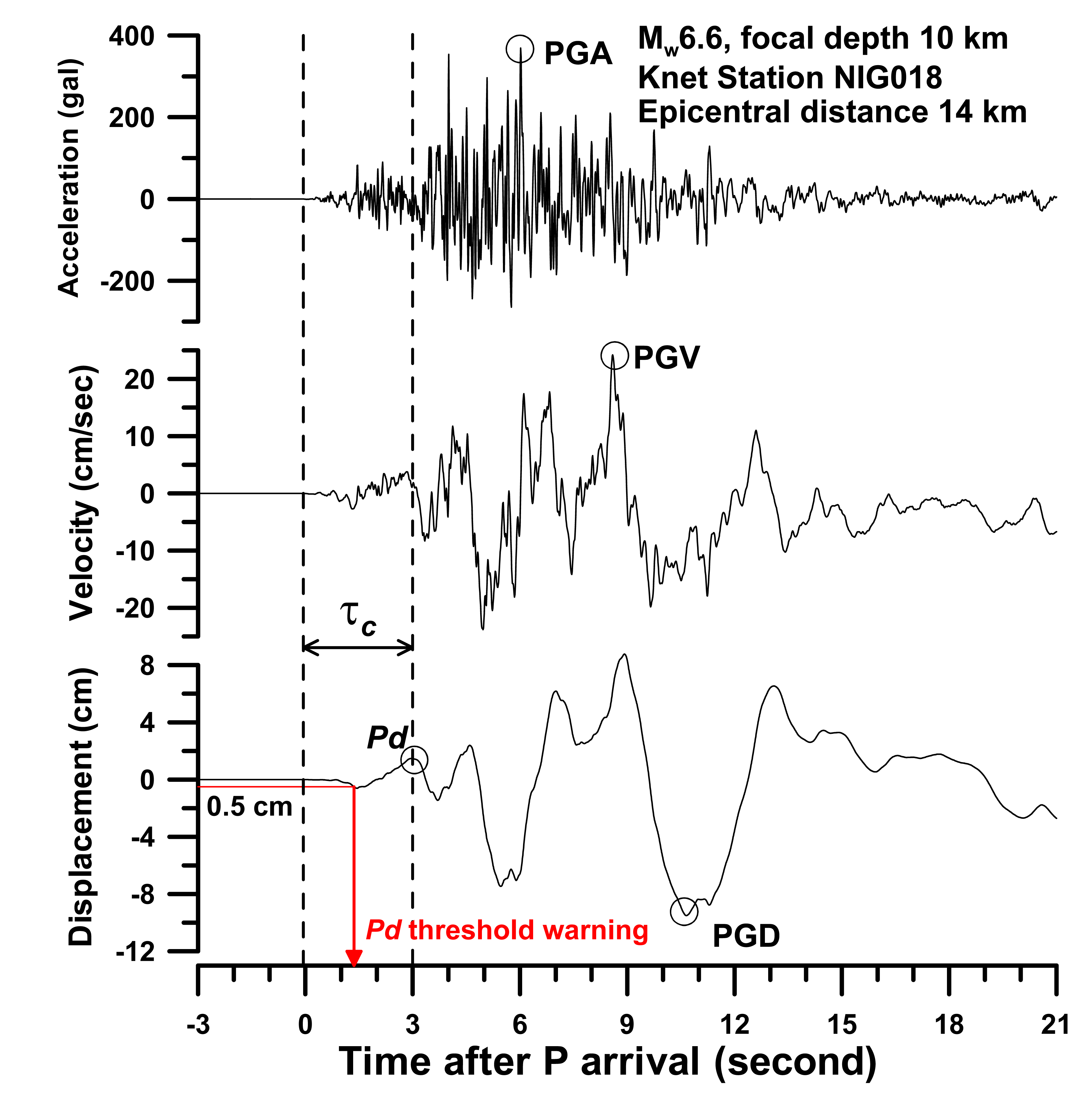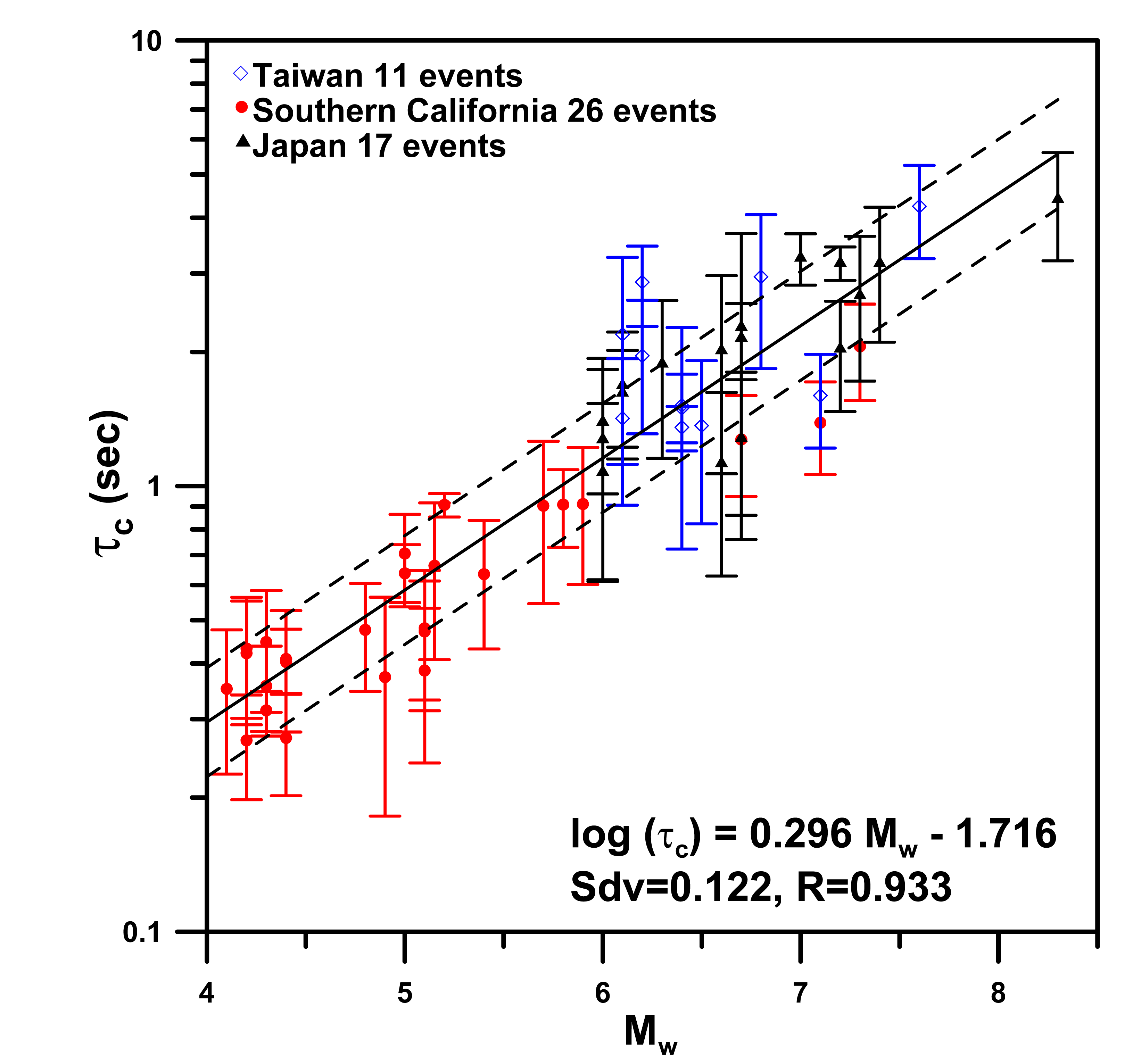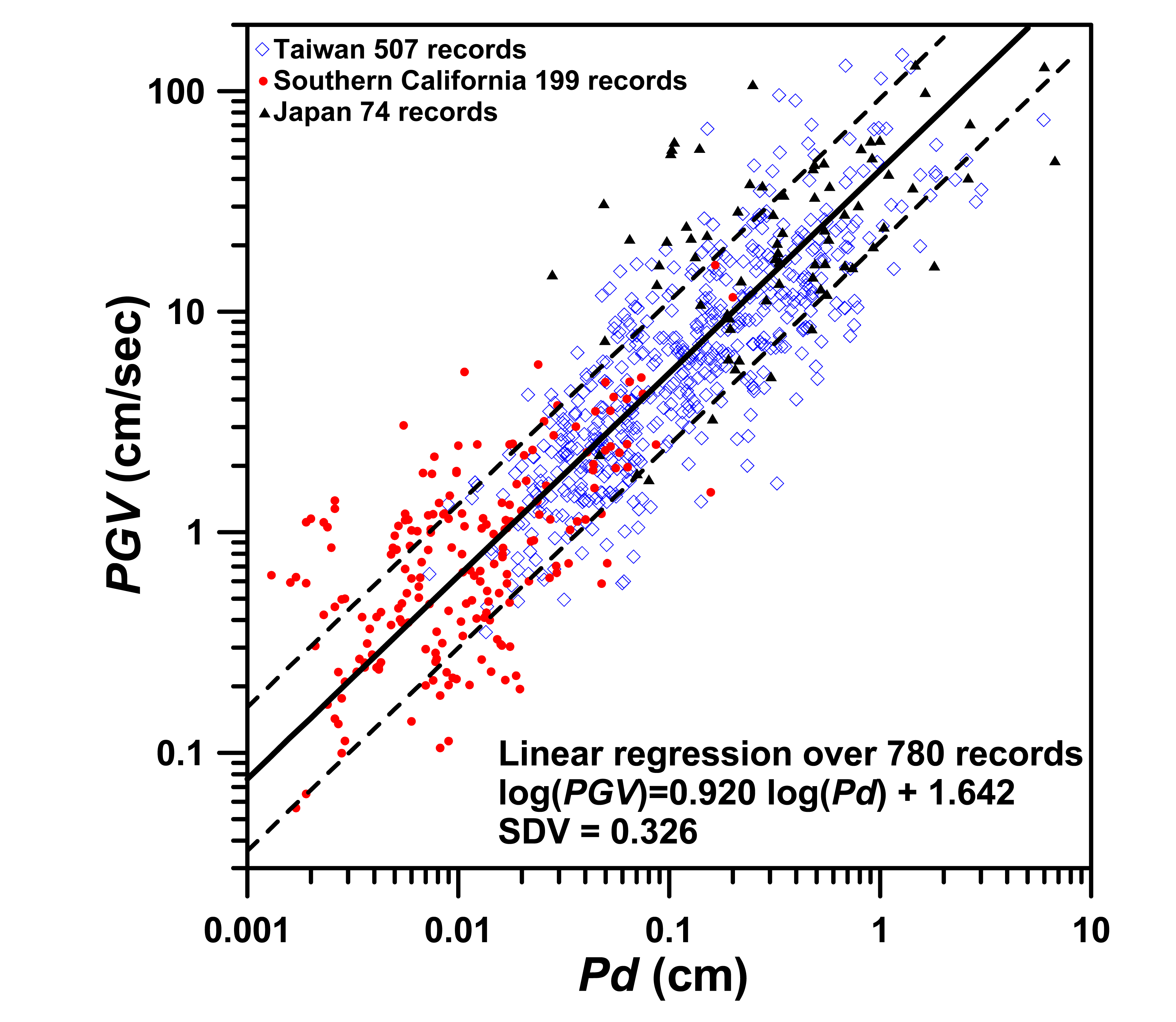Development of an Earthquake Early Warning System Using Real-Time Strong Motion Signals
Abstract
:1. Introduction
2. τc and Pd method
3. Discussion and conclusions
Acknowledgments
References
- Allen, R. V. Automatic earthquake recognition and timing from single traces. Bull. Seism. Soc. Am. 1978, 68, 1521–1532. [Google Scholar]
- Allen, R. M.; Kanamori, H. The potential for earthquake early warning in Southern California. Science 2003, 300, 786–789. [Google Scholar]
- Böse, M.; Ionescu, C.; Wenzel, F. Earthquake early warning for Bucharest, Romania: Novel and revised scaling relations. Geophys. Res. Lett. 2007, 34, L07302. [Google Scholar] [CrossRef]
- Cooper, J. D. Letter to editor. San Francisco Daily Evening Bulletin 1868. [Google Scholar]
- Espinosa-Aranda, J.; Jiménez, A.; Ibarrola, G.; Alcantar, F.; Aguilar, A.; Inostroza, M.; Maldonado, S. Mexico City seismic alert system. Seism. Res. Lett. 1995, 66, 42–53. [Google Scholar]
- Hauksson, E.; Small, P.; Hafner, K.; Busby, R.; Clayton, R.; Goltz, J.; Heaton, T.; Hutton, K.; Kanamori, H.; Polet, J.; Given, D.; Jones, L. M.; Wald, D. Southern California Seismic Network: Caltech/USGS element of TriNet 1997-2001. Seism. Res. Lett. 2001, 72, 690–704. [Google Scholar]
- Holland, A. Earthquake Data Recorded by the MEMS Accelerometer. Seism. Res. Lett. 2003, 74, 20–26. [Google Scholar]
- Horiuchi, S.; Negishi, H.; Abe, K.; Kamimura, A.; Fujinawa, Y. An automatic processing system for broadcasting earthquake alarms. Bull. Seism. Soc. Am. 2005, 95, 708–718. [Google Scholar]
- Kanamori, H.; Hauksson, E.; Heaton, T. Real-time seismology and earthquake hazard mitigation. Nature 1997, 390, 461–464. [Google Scholar]
- Kanamori, H. Real-time seismology and earthquake damage mitigation. Annual Review of Earth and Planetary Sciences 2005, 33, 195–214. [Google Scholar] [CrossRef]
- Kamigaichi, O. JMA Earthquake Early Warning. Journal of Japan Association for Earthquake Engineering 2004, 4, 134–137. [Google Scholar]
- Nakamura, Y. On the urgent earthquake detection and alarm system (UrEDAS). Proceeding of 9th world conference on earthquake engineering, Tokyo-Kyoto, Japan, 1988.
- Odaka, T.; Ashiya, K.; Tsukada, S.; Sato, S.; Ohtake, K.; Nozaka, D. A new method of quickly estimating epicentral distance and magnitude from a single seismic record. Bull. Seism. Soc. Am. 2003, 93, 526–532. [Google Scholar]
- Teng, T. L.; Wu, Y. M.; Shin, T. C.; Tsai,, Y. B.; Lee, W. H. K. One minute after: strong-motion map, effective epicenter, and effective magnitude. Bull. Seism. Soc. Am. 1997, 87, 1209–1219. [Google Scholar]
- Tsukada, S.; Odaka, T.; Ashiya, K.; Ohtake, K.; Zozaka, D. Analysis of the envelope waveform of the initial part of P-waves and its application to quickly estimating the epicentral distance and magnitude. Zisin 2004, 56, 351–361. [Google Scholar]
- Wald, D. J.; Quitoriano, V.; Heaton, T. H.; Kanamori, H. Relationships between peak ground acceleration, peak ground velocity, and modified Mercalli intensity in California. Earthquake Spectra 1999a, 15, 557–564. [Google Scholar]
- Wald, D. J.; Quitoriano, V.; Heaton, T. H.; Kanamori, H.; Scrivner, C. W.; Worden, C. B. TriNet ShakeMaps: Rapid generation of peak ground motion and intensity maps for earthquakes in Southern California. Earthquake Spectra 1999b, 15, 537–555. [Google Scholar]
- Wu, Y. M.; Chen, C. C.; Shin, T. C.; Tsai, Y. B.; Lee, W. H. K.; Teng, T. L. Taiwan Rapid Earthquake Information Release System. Seism. Res. Lett. 1997, 68, 931–943. [Google Scholar]
- Wu, Y. M.; Shin, T. C.; Tsai, Y. B. Quick and reliable determination of magnitude for seismic early warning. Bull. Seism. Soc. Am. 1998, 88, 1254–1259. [Google Scholar]
- Wu, Y. M.; Chung, J. K.; Shin, T. C.; Hsiao, N. C.; Tsai, Y. B.; Lee, W. H. K.; Teng, T. L. Development of an integrated seismic early warning system in Taiwan- case for Hualien earthquakes. Terrestrial, Atmospheric and Oceanic Sciences 1999, 10, 719–736. [Google Scholar]
- Wu, Y. M.; Lee, W. H. K.; Chen, C. C.; Shin, T. C.; Teng, T. L.; Tsai, Y. B. Performance of the Taiwan Rapid Earthquake Information Release System (RTD) during the 1999 Chi-Chi (Taiwan) earthquake. Seismo. Res. Lett. 2000, 71, 338–343. [Google Scholar]
- Wu, Y.M.; Shin, T. C.; Chang, C. H. Near realtime mapping of peak ground acceleration and peak ground velocity following a strong earthquake. Bull. Seism. Soc. Am 2001, 91, 1218–1228. [Google Scholar]
- Wu, Y. M.; Teng, T. L. A virtual sub-network approach to earthquake early warning. Bull. Seism. Soc. Am. 2002, 92, 2008–2018. [Google Scholar]
- Wu, Y. M.; Teng, T. L.; Shin, T. C.; Hsiao, N. C. Relationship between peak ground acceleration, peak ground velocity, and intensity in Taiwan. Bull. Seism. Soc. Am. 2003, 93, 386–396. [Google Scholar]
- Wu, Y. M.; Kanamori, H. Experiment on an onsite early warning method for the Taiwan early warning system. Bull. Seism. Soc. Am. 2005a, 95, 347–353. [Google Scholar]
- Wu, Y. M.; Kanamori, H. Rapid assessment of damaging potential of earthquakes in Taiwan from the beginning of P Waves. Bull. Seism. Soc. Am. 2005b, 95, 1181–1185. [Google Scholar]
- Wu, Y. M.; Yen, H. Y.; Zhao, L.; Huang, B. S.; Liang, W. T. Magnitude determination using initial P waves: A single-station approach. Geophys. Res. Lett. 2006, 33, L05306. [Google Scholar] [CrossRef]
- Wu, Y. M.; Zhao, L. Magnitude estimation using the first three seconds P-wave amplitude in earthquake early warning. Geophys. Res. Lett 2006, 33, L16312. [Google Scholar] [CrossRef]
- Wu, Y. M.; Kanamori, H.; Allen, R.; Hauksson, E. Determination of earthquake early warning parameters, τc and Pd, for southern California. Geophys. J. Int. 2007, 170, 711–717. [Google Scholar]
- Wu, Y. M.; Kanamori, H. Exploring the feasibility of on-site earthquake early warning using close-in records of the 2007 Noto Hanto earthquake. Earth, Planets and Space 2008, (in press). [Google Scholar]
- Zollo, A.; Lancieri, M.; Nielsen, S. Earthquake magnitude estimation from peak amplitudes of very early seismic signals on strong motion records. Geophys. Res. Lett. 2006, 33, L23312. [Google Scholar] [CrossRef]



© 2008 by MDPI Reproduction is permitted for noncommercial purposes.
Share and Cite
Wu, Y.-M.; Kanamori, H. Development of an Earthquake Early Warning System Using Real-Time Strong Motion Signals. Sensors 2008, 8, 1-9. https://doi.org/10.3390/s8010001
Wu Y-M, Kanamori H. Development of an Earthquake Early Warning System Using Real-Time Strong Motion Signals. Sensors. 2008; 8(1):1-9. https://doi.org/10.3390/s8010001
Chicago/Turabian StyleWu, Yih-Min, and Hiroo Kanamori. 2008. "Development of an Earthquake Early Warning System Using Real-Time Strong Motion Signals" Sensors 8, no. 1: 1-9. https://doi.org/10.3390/s8010001





